חדשות המחקר

Raneen Abu Shqara, Yara Nakhleh Francis, Habib Haj, Sofya Markdorf, Lior Lowenstein, Maya Frank Wolf : Digital versus speculum-guided catheter balloon insertion for cervical ripening in multiparas: A randomized controlled trial (Am J Obstet Gynecol MFM .
Catheter balloon insertion into the maternal uterine cervix is routinely speculum-guided; digital-insertion has been reported, although it was not found to be more tolerable in nulliparas. Objective: In multiparas, we aimed to evaluate maternal pain, the induction to delivery interval, and maternal satisfaction of the digital-insertion vs. speculum-guided Foley catheter balloon for labor induction.
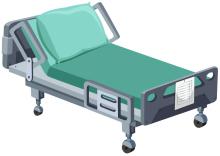
Khalaf Kridin:S2k guidelines on the management of paraneoplastic pemphigus/paraneoplastic autoimmune multiorgan syndrome initiated by the European Academy of Dermatology and Venereology (EADV) (J Eur Acad Dermatol Venereol .)
Paraneoplastic pemphigus (PNP), also called paraneoplastic autoimmune multiorgan syndrome (PAMS), is a rare autoimmune disease with mucocutaneous and multi-organ involvement. PNP/PAMS is typically associated with lymphoproliferative or haematological malignancies, and less frequently with solid malignancies. The mortality rate of PNP/PAMS is elevated owing to the increased risk of severe infections and disease-associated complications, such as bronchiolitis obliterans. Objectives: These guidelines summarize evidence-based and expert-based recommendations (S2k level) for the clinical characterization, diagnosis and management of PNP/PAMS. They have been initiated by the Task Force Autoimmune Blistering Diseases of the European Academy of Dermatology and Venereology with the contribution of physicians from all relevant disciplines. The degree of consent among all task force members was included.
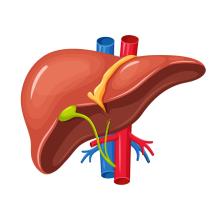
Shira Perez, Anat Lavi-Itzkovitz, Tom Domovitz, Roba Dabour, Meital Gal-Tanamy: High-resolution genomic profiling of liver cancer links etiology with mutation and epigenetic signatures (Cell Mol Gastroenterol Hepatol . )
Hepatocellular carcinoma (HCC) is a model of diverse spectrum of cancers, since it is induced by well-known etiologies, mainly Hepatitis C virus (HCV) and Hepatitis B virus (HBV). Here we aimed to identify HCV-specific mutational signature and explored the link between the HCV-related regional variation in mutations rates and HCV-induced alterations in genome-wide chromatin organization.

Jacob Bornstein: Consensus statement on the management of vaginal intraepithelial neoplasia
Full name of article: The European Society of Gynaecological Oncology (ESGO), the International Society for the Study of Vulvovaginal Disease (ISSVD), the European College for the Study of Vulval Disease (ECSVD), and the European Federation for Colposcopy (EFC) consensus statement on the management of vaginal intraepithelial neoplasia
The European Society of Gynaecological Oncology (ESGO), the International Society for the Study of Vulvovaginal Disease (ISSVD), the European College for the Study of Vulval Disease (ECSVD), and the European Federation for Colposcopy (EFC) developed consensus statements on pre-invasive vulvar lesions in order to improve the quality of care for patients with vaginal intraepithelial neoplasia (VaIN).

Amir Kuperman, Tzipora C Falik Zaccai: The Clinical Picture of the ERCC6L2 Disease - from Bone Marrow Failure to Acute Leukemia (Blood . )
Biallelic germline ERCC6L2 variants strongly predispose to bone marrow failure (BMF) and myeloid malignancies characterized by somatic TP53-mutated clones and erythroid predominance. We present a series of 52 subjects (35 families) with ERCC6L2 biallelic germline variants collected retrospectively in 11 centers globally, including follow-up of 1165 person-years.
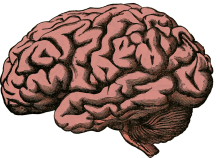
Samih Badarny, Amal Abu Ayash, Galina Keigler: Vagal Nerve Activity and Short-Term Clinical Outcomes after Stroke: What Is Left May Not Be Right (J Clin Med .)
Stroke is a leading cause of death worldwide. Multiple factors influence the severity of stroke. Normal functional and biological differences seen between the hemispheres may also be related to stroke severity. In the present study, we examined the differences in the severity of stroke as a function of stroke side, and whether patients' vagal nerve activity moderated such differences.

Edo Y Birati: Durable Left Ventricular Assist Device Outflow Graft Obstructions: Clinical Characteristics and Outcomes (J Clin Med . )
We report on the clinical course and management of patients supported with durable implantable LVADs who developed outflow graft obstructions at a large academic center.
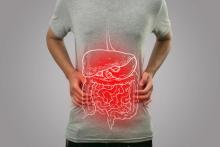
Nasser Sakran: Nutritional and Lifestyle Behaviors Reported Following One Anastomosis Gastric Bypass Based on a Multicenter Study (Nutrients .)
This study aimed to describe nutritional and lifestyle parameters following one-anastomosis gastric bypass (OAGB).
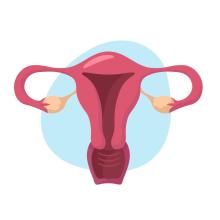
Ala Aiob, Raneen Abu Shqara, Susana Mustafa Mikhail, Avishalom Sharon, Marwan Odeh, Lior Lowenstein: Alternative beta-hCG follow-up protocols after single-dose methotrexate therapy for ectopic pregnancy: A retrospective cohort study (Eur J Obstet Gynecol
This study assessed the relevance of reductions in beta-hCG levels between days 0 and 4 and between days 0 and 7 after single-dose methotrexate therapy, and the success of the therapy.
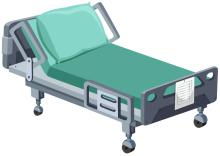
Liza Grosman-Rimon, Muhamd Atrash, Aida Nakhoul, Hanadi Saadi, Edo Y Birati, Shemy Carasso, Erez Kachel: The Effects of Preoperative Pain Education on Pain Severity in Cardiac Surgery Patients: A Pilot Randomized Control Trial (Pain Manag Nurs .)
There is minimal research on the effect of individualized preoperative education on postoperative pain and postoperative pain medication intake. The study objective was to assess the effect of individually tailored preoperative education on postoperative pain severity, number of pain breakthroughs, and use of pain medication in participants receiving the intervention compared to controls.
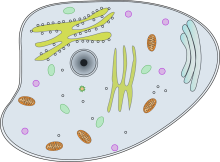
Mulate Zerihun, Surya Sukumaran, Nir Qvit: The Drp1-Mediated Mitochondrial Fission Protein Interactome as an Emerging Core Player in Mitochondrial Dynamics and Cardiovascular Disease Therapy (Int J Mol Sci .)
Mitochondria, the membrane-bound cell organelles that supply most of the energy needed for cell function, are highly regulated, dynamic organelles bearing the ability to alter both form and functionality rapidly to maintain normal physiological events and challenge stress to the cell. This amazingly vibrant movement and distribution of mitochondria within cells is controlled by the highly coordinated interplay between mitochondrial dynamic processes and fission and fusion events, as well as mitochondrial quality-control processes, mainly mitochondrial autophagy (also known as mitophagy). ... In this review, we first aim to describe the structural elements, functionality, and regulatory mechanisms of the key mitochondrial fission protein, Drp1, and other mitochondrial fission adaptor proteins, including mitochondrial fission 1 (Fis1), mitochondrial fission factor (Mff), mitochondrial dynamics 49 (Mid49), and mitochondrial dynamics 51 (Mid51). The core area of the review focuses on the recent advances in understanding the role of the Drp1-mediated mitochondrial fission adaptor protein interactome to unravel the missing links of mitochondrial fission events. Lastly, we discuss the promising mitochondria-targeted therapeutic approaches that involve fission, as well as current evidence on Drp1-mediated fission protein interactions and their critical roles in the pathogeneses of cardiovascular diseases (CVDs).
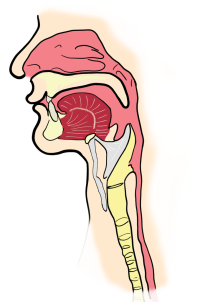
Narges Azzam, Basem Hijazi, Amir Mari: Correlation between Lower Esophageal Sphincter Metrics on High-Resolution Manometry and the Clinical Presentation of Patients with Newly Diagnosed Achalasia (Diagnostics (Basel) . )
Achalasia is characterized by aperistalsis with poor relaxation of the lower esophageal sphincter (LES). We aimed to systematically assess whether LES metrics on high-resolution manometry (HRM) correlate with the symptomatic or endoscopic presentation of patients with achalasia.

Ohad Ronen: Management of Older Patients with Head and Neck Cancer: A Comprehensive Review (Adv Ther .)
The projected increase in life expectancy over the next few decades is expected to result in a rise in age-related diseases, including cancer. Head and neck cancer (HNC) is a worldwide health problem with high rates of morbidity and mortality. In this report, we have critically reviewed the literature reporting the management of older patients with HNC.

David Carmon, Hanan Rohana, Maya Azrad, Avi Peretz: The Impact of a Positive Biofire® FilmArray® Gastrointestinal Panel Result on Clinical Management and Outcomes (Diagnostics (Basel) . )
The gold standard diagnostic method for gastrointestinal infections is stool culture, which has limited sensitivity and long turnaround time. Infection diagnosis recently shifted to syndrome-based panel assays. This study employed the FilmArray® Gastrointestinal Panel, which detects 22 pathogens simultaneously, to investigate gastrointestinal infection and pathogen distribution in 91 stool samples of patients hospitalized at the Tzafon Medical Center, Israel, during 2020, and to compare the clinical and demographic data of negative vs. positive samples.

Tzipora C Falik-Zaccai, Hanna Mandel: Hereditary orotic aciduria identified by newborn screening (Front Genet .)
Hereditary orotic aciduria is an extremely rare, autosomal recessive disease caused by deficiency of uridine monophosphate synthase. Untreated, affected individuals may develop refractory megaloblastic anemia, neurodevelopmental disabilities, and crystalluria. Newborn screening has the potential to identify and enable treatment of affected individuals before they become significantly ill.



